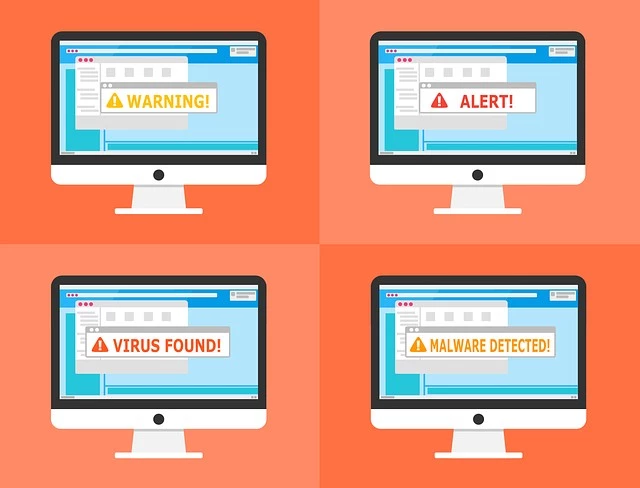Working as a security developer comes with many perks. Flexible working opportunities, a high-demand market, a promising salary, and a bright future ahead of you are just some advantages of the job. However, many people don't know how demanding and challenging the position of a software developer can be. It is a true challenge to stay at the top of the best developers on the market. To maintain the quality of your work, one of the most essential factors is to research security threats every software developer should be aware of.
With the increased rate of hacker attacks, this goes without saying. With that in mind, let's dive deeper into this topic and learn how to write safer code!
Best practices for writing safe and clean code
Honoring best practices for writing a safe piece of programming code is one of the most important things to learn. Even though it is true that focusing on improving UI/UX with the right front end is important, security should always come first.
With cybersecurity being our topic of the day, here is where you really need to pay attention to:
-
input validation
-
output validation
-
database connection and access
-
cryptography
-
understanding third-party libraries
-
how to handle errors
Input validation
Input validation should validate that the data in the field is inputted correctly and does not represent a piece of code that could harm the system. To understand more, you should learn about SQL injection attacks.

When accessing an application, a user should not have the possibility to input malicious code.
Input validation should validate that the data in the field is inputted correctly, and it does not represent a piece of code that could harm the system. To understand more, you should learn about SQL injection attacks.
Output validation
Just how input validation is a requirement, output validation or output encoding is also of utmost importance. Let's say you need to send output data to the browser, so it can be interpreted and presented to the user. By encoding, you are converting special characters into something that a browser can understand and tell it to use it in a non-invasive way. With that in mind, the output data should always be HTML encoded. That way, the browser is prevented from executing script tags. Otherwise, you could be at risk of an XSS attack.
Database connection and access
Every website pulls data from a database. That also applies to applications. If a database is corrupted, a company could lose all of its data, creating a large setback. Because of that, we have to briefly return to SQL injection.
To prevent data loss, it is imperative to avoid using dynamic SQL queries because they cannot distinguish what application code and data are. Instead, always use parameterized queries.

Database protection should be your number one priority.
Also, you can use stored procedures as long as they don't contain dynamic SQL queries.
The experts at MoversTech CRM note that there are additional ways to protect your database, like restricting access to everyone who doesn't need it. For example, if user A needs only access to table A, that is the only access that user should get.
Cryptography
By using cryptography, you are concealing the actual data in forms of secret keys, public keys, and hash functions. Even though this is a huge topic to cover, here are just a few things to have in mind:
-
unless you are an expert on the topic, do not create your own crypto language. Stick to what is accepted and tested in the cryptography community.
-
a strong encryption key has the length of 128 bits or more
-
do not hardcode keys into the application; find a place to store them and rotate them in a time cycle
-
avoid using weak DES and RC4 algorithms, instead use a strong one like AES
-
in the same manner, SHA-2 and SHA-3 are secure hashing algorithms that you should use. SHA-1 and MD5 should be avoided.
Understanding third-party libraries
Third-party libraries are a common practice among software developers. They make writing the code a lot easier and faster. However, they also represent potential security threats every software developer should be aware of. To avoid any issues with them, always check if they have any open CVE entries. Furthermore, make sure to update them on a regular basis as soon as the new security patch is out. Finally, you should only use libraries that are tested and regularly maintained.
How to handle errors
When writing applications, it is important to implement error handling. This will tell your app what to do in case an error occurs. If this is not covered, the application will crash. When implementing error handling, never show the actual error to the end user. Always use a generic message so they don't know where the error is.

Protect your clients from hackers who try to invade their PC by writing clean and safe code.
Types of security threats every software developer should be aware of
For the end, here is a list of possible security threats that hackers widely use:
- Virus - represents a program that can "infect" a computer via USB or online, replicate itself, and cause different types of issues;
- Trojan - a program disguised in a safe application that allows the hacker to get remote access to your computer;
- Worm - a virus that, upon reaching your PC, starts replicating until it completely consumes your hard drive memory, resulting in your PC running slow or crashing;
- Adware - mostly used for advertising purposes, it spies on your browsing history to help the user put you in the correct targeted group for advertising;
- Spyware - just like Adware, it can infect the PC by downloading free software online. The primary use is to gather information and pass it on to the attacker;
- Spam - even though spam e-mails are more of a nuisance than an actual threat, they can waste your time and consume network bandwidth. Furthermore, it is possible to receive a suspicious e-mail that could jeopardize your cybersecurity if you open it.
- Botnets - they usually infect your PC by tagging along with a Trojan virus. Botnets are hidden on IRC networks, from where they can launch fake IRC clients.
- Rootkits - very difficult to discover, rootkits activate when your computer boots up before anti-virus software is activated. Rootkits can install files and accounts to gather sensitive information.
- Privileges security - as discussed above, hackers can exploit a bug in the privileged access to an application to steal data.
- Logic bombs - also known as "slag code", these are parts of code added to the software. Logic bombs can activate by themselves and trigger functions and actions to perform malicious attacks.
Protecting your code means protecting your clients!
By researching security threats every software developer should be aware of, you are making the first step toward learning how to write safe code. Furthermore, understanding the structure of an application from this point of view will help you in designing better and more secure applications. With that in mind, always double-check your code, and follow the best practices to prevent cyber-attacks!


No comments yet